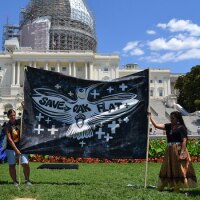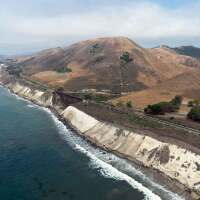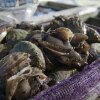Mixteco Farmworkers Join Ocean Restoration Efforts
Eight-year-old Jordi Tello is very excited about his family's Saturday trip to the mysterious beach close to home, one he and his three siblings had never seen. As the family walked on the sand towards the ocean, encountering dunes and curiously eyeing the metal fence around it, Jordi said, “It doesn´t look like a beach.”
A few minutes later, Veronica Hernández holding Jordi and José (6) by the hand, teen daughter Mayra and dad Baltasar Tello, carrying the one-year-old baby of the family on his shoulders, all arrive at the shoreline and marvel at the long white beach, seemingly unspoiled by development or construction: Ormond Beach in Oxnard.
Jordi was right in a way: this is no ordinary beach. Ormond Beach is one of the few remaining wild coasts in California but one that has been surrounded by pollution for decades.
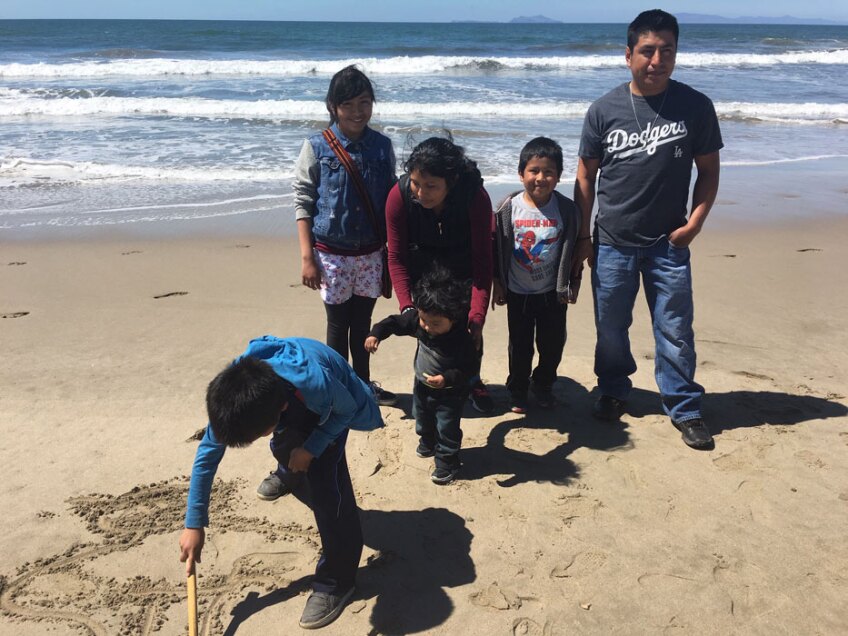
If you look beyond the metal fences, instead of beautiful mansions or shopping malls typical of Santa Barbara to the north or Malibu to the south, this beach is surrounded by a naval base (Point Mugu), a recently abandoned power plant (Gen-On) and a mountain of toxins left over from a now-closed metal recycler plant (Halaco).
At the same time, Ormond Beach is home to one of the most important wetlands and coastal environment restoration projects in Southern California's recent history and a key site for the survival of several species of birds and other animals.
"The reason this beach is so special is that no other part of California's coastline has remained in a wild state, without houses or development," explains Cynthia Hartley, a biologist with the Audubon organization, which specializes in protecting birds and their habitats. "There are two very specific types of birds that make their nests in the dunes of this type of beach, and this habitat almost disappeared in previous decades, until we began to pay attention.”
Unaware of the catastrophe of endangered species, the Tello Hernández family is simply happy to know that this place exists, something they have ignored until now. "We are very surprised by this beach. We have never known it before and it is sad that it hasn´t been accessible when many children or people could use it for the enjoyment of their families," said the young Indigenous mother, who works in the cultivation of cilantro.
Veronica and her husband Baltasar, like so many Mexican immigrants – mostly Indigenous from southern Mexican states – work in agriculture in the Oxnard area, one of the most important regions for the production of strawberries, celery, raspberries and green leafy vegetables in California.
On this sunny Saturday in early spring, some 60 migrant families, mostly Indigenous Mixtecs, have been invited by the city of Oxnard and environmental groups, such as Coastal Conservancy and Nature Conservancy, to visit the place that their coalition has fought to rescue, after years of being at the mercy of industrial toxins.

"These are the communities that are the closest to the beach and that can benefit from this restoration plan in which several partners are involved" said Miguel Ramos of the Nature Conservancy. “This project also includes access to new jobs.”
But today´s visit it's not just about offering jobs, it's about giving the area's resident community – whose voice is not traditionally taken into account – the opportunity to get involved in the process that includes protecting the beach and the species that inhabit or reproduce in the wild beach.
Oxnard and the environmental groups have reached out to community organizations such as MICOP (Mixteco Indígena Community Organizing Project) and CAUSE (Central Coastal Alliance for a Sustainable Economy) to serve as a bridge to residents, mostly immigrant farm workers.
"Sixty percent of the workforce in Ventura County is Indigenous," said Arcenio López, executive director of MICOP. "We are some 24,000 indigenous Mixtecos, Zapotecos, Otomí, Nahuatl, Purépecha, and Amuzgos, among others.”
Unlike other coastal areas of California – which usually are rich residential enclaves – Oxnard was never a beach community, but rather a farming town that grew toward the ocean.
Perhaps because of that, its recent history includes decades of industrialization and projects that left a legacy of pollution and trash that would be unthinkable in more politically influential coastal areas.
"The environmental awareness we have today didn't exist before," said Maricela Morales, of CAUSE. "There was a metal recycling plant here that is now a toxic superfund site controlled by the federal government, and in the last 12 years we have continued to fight more toxic and industrial projects," Morales added.
The residents of the area closest to that beach and industrial zone are overwhelmingly immigrants, 80% speak a language other than English at home, and one-third are under the age of 18. "In other words, they are young, poor and brown," adds Morales.
After visiting the beach, the group gathers at a community center in Oxnard for a lunch of chicken with mole and tlayudas oaxaqueñas.
Carmen Ramirez, the city's interim mayor, explains that when she was a child in Los Angeles, she always dreamed of going to the beach. “It could never be, we lived 20 miles from the ocean and my parents were poor and worked non-stop”, she said. "I want the people who live and work in this community to have the opportunity to use this treasure that we have here."
A few years ago, the city of Oxnard imposed restrictions on vehicles, dogs and campfires in Ormond Beach to prevent the destruction of the dunes and the birds that nest there. The Nature Conservancy and the Coastal Conservancy purchased surrounding land to protect them. They are now working to clean up and restore the area.
"We want a future in which Ormond Beach is accessible to the public, the beach and wetlands are protected, and we can ensure the survival of the diversity of plants and animals found there," said Peter Dixon of the Nature Conservancy. "We also aim to protect the area from the industrial pollution that has been its legacy.”
In the future, wetlands and dunes will protect inland areas, countryside and surrounding cities from the rising tides that will occur with climate change, Dixon said.
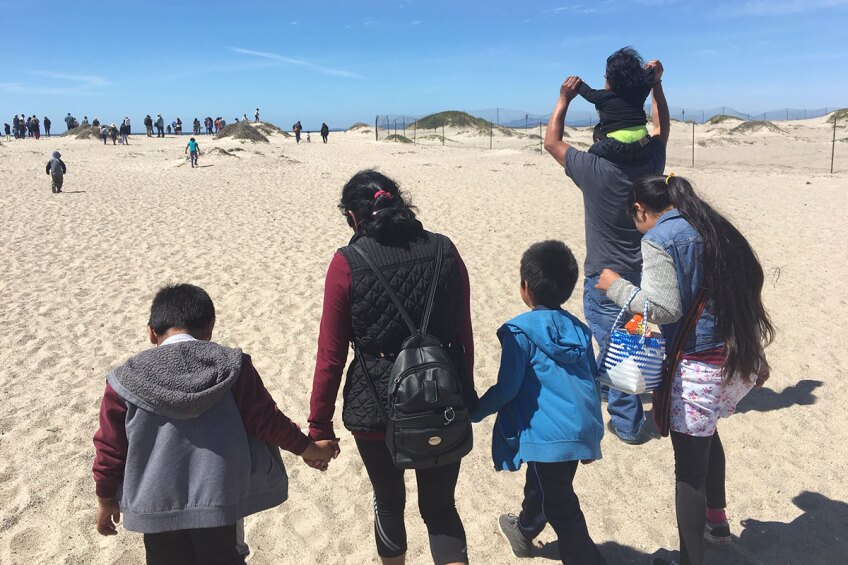
Seated among the public, the Tello Hernández family and other families listen attentively. Some are using a headset that translates everybody’s words from English to Mixtec.
Afterwards, Veronica, who is much more talkative than her husband Baltasar, agrees that human beings often "don't know how to value what we have, and we are killing nature.”
López, of the Mixtec organization, points out that Indigenous people live "very connected to Mother Nature and that this is a custom that is lost through migration and farm work, which occupies them from dawn to dusk.”
"This was a reminder to our community, a moment of reconnection with water," said the Indigenous activist. "Although we Mixtecs generally don't live on the beaches, touching the water, the sand, having an open space, appreciating the animals that live there, is being in contact with nature and also knowing that we have to preserve it,” López said.

